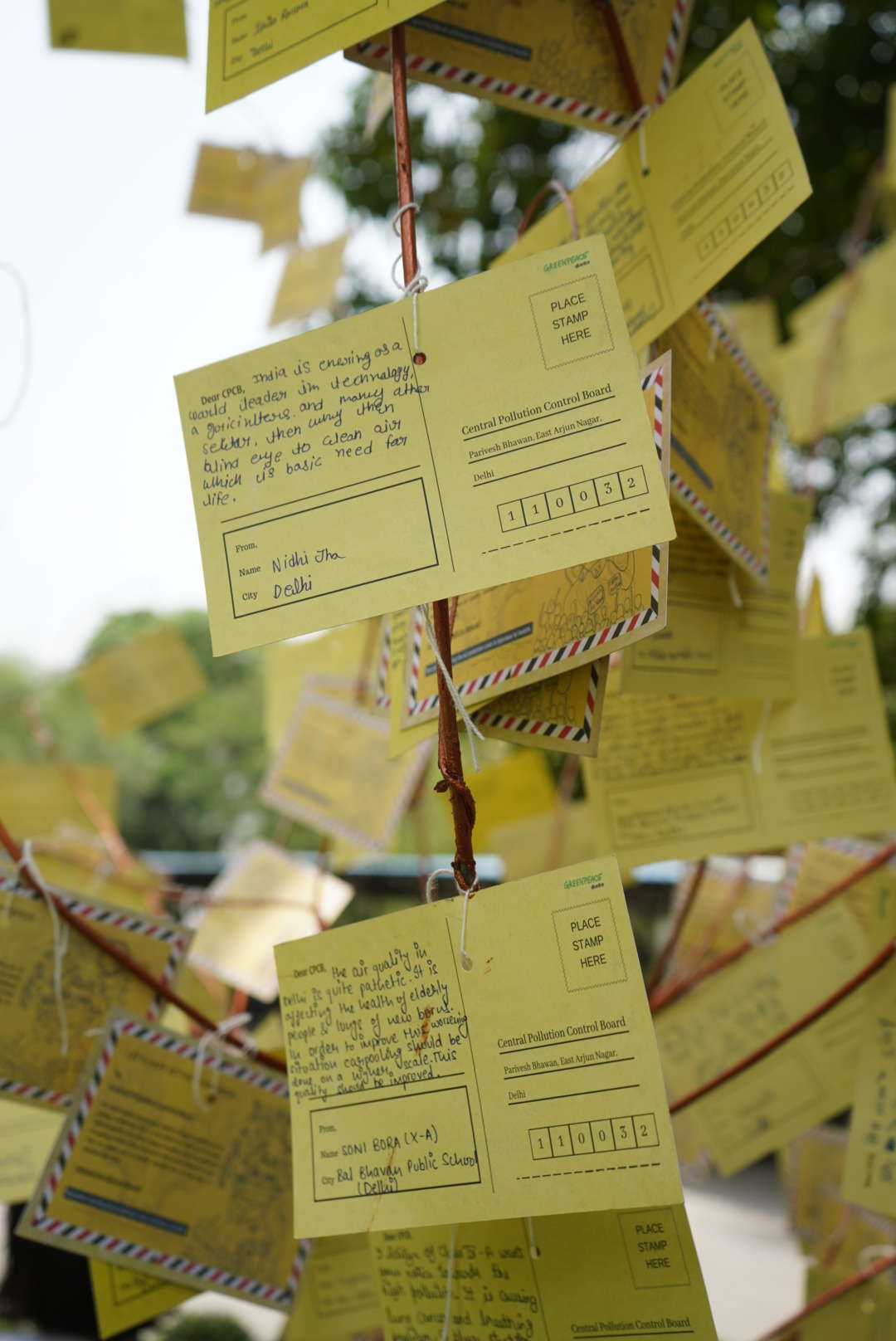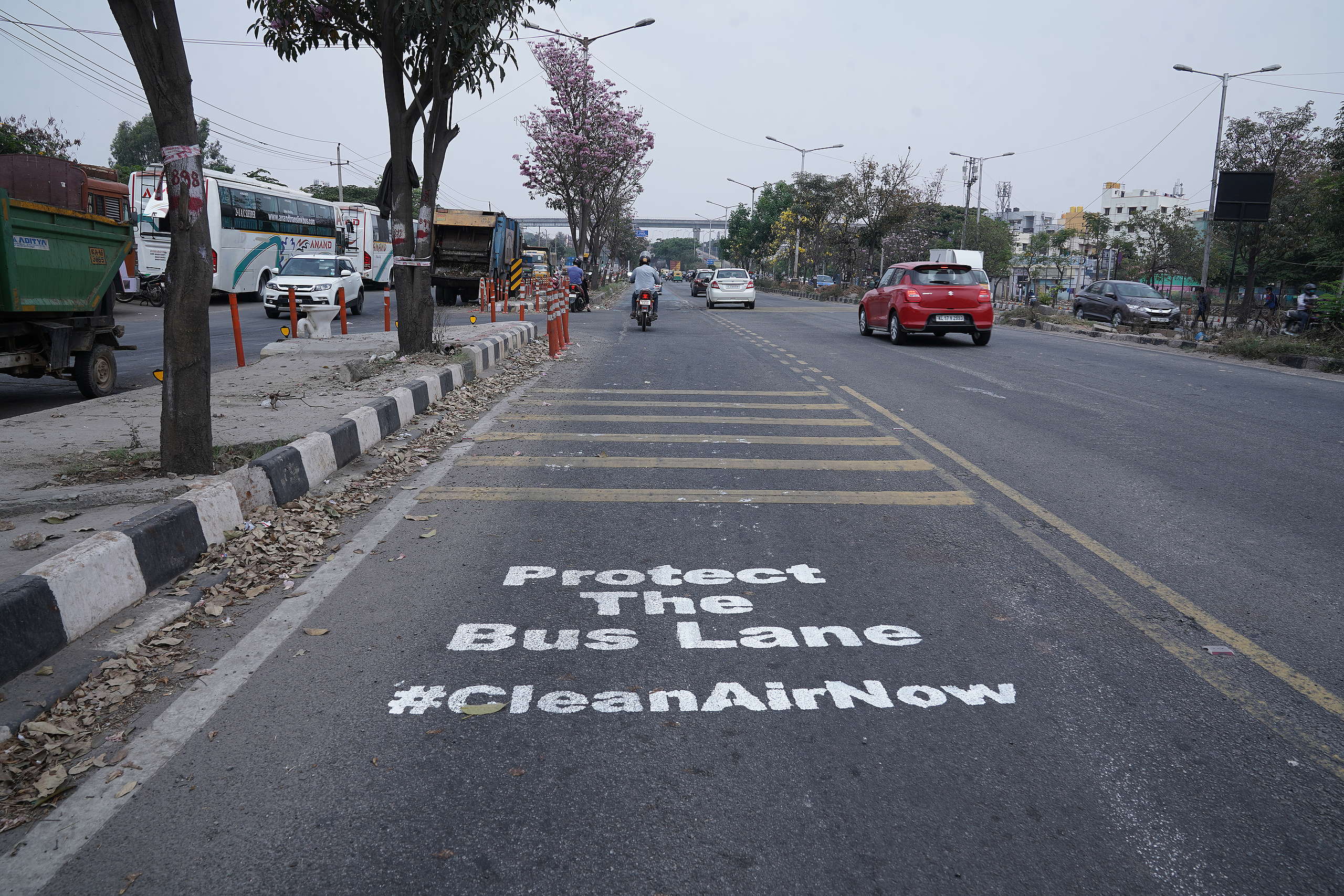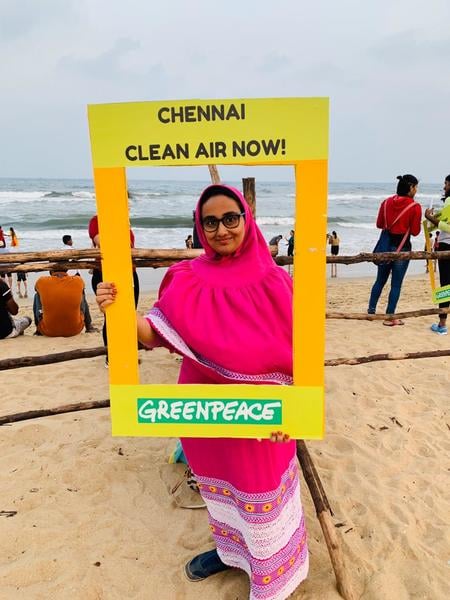New Delhi, 22 September: Today the World Health Organization (WHO) updated its air quality guidelines for the first time in 15 years. The new guidelines are derived from strong scientific evidence of the damage air pollution inflicts on human health and hence, recommends new air quality levels based on reducing concentrations of key air pollutants.
According to the new guidelines the annual PM2.5 mean now has been updated to 5µg/m3 compared to 10 µg/m3 in 2005. Similarly, annual mean for PM10 is updated to 20µg/m3 to 15µg/m3 and NO2 to 10µg/m3 from 40µg/m3.
WHO Air Quality Guidelines. Source: WHO
| Pollutant | Guideline Concentration (µg/m3) in 2005 | Guideline Concentration (µg/m3) in 2021 | Averaging Period |
| PM2.5 | 25 | 15 | 24 hour mean |
| 10 | 5 | Annual mean | |
| PM10 | 50 | 45 | 24 hour mean |
| 20 | 15 | Annual mean | |
| SO2 | 20 | 40 | 24 hour mean |
| O3 | 100 | 100 | 8 hour mean |
| NO2 | 200 | 25 | 24 hour mean |
| 40 | 10 | Annual mean |
Greenpeace India’s analysis of PM2.5 data aggregated by IQAir found that at least 79 of the world’s 100 most populous cities breached the outgoing WHO annual mean PM2.5 guidelines in 2020. In another 8 of the 100 cities, PM2.5 data for 2020 was unavailable due to a lack of government disclosure or monitoring. The remaining 13 cities met the guidelines on a city-wide scale according to IQAir data, but hotspots within all 100 cities likely exceeded the guidelines locally, for example in locations close to busy roads or industry1.
In Delhi, city-wide annual average air pollution levels exceeded the 2005 WHO guidelines by nearly eightfold in 2020, the highest margin of all cities in the dataset. Greenpeace researchers estimate that 57,000 premature deaths in Delhi during 2020 can be attributed to air pollution exposure2. According to the IQAir data, most of the world’s biggest cities did not meet WHO guidelines, a Greenpeace India analysis of IQAir data shows.
Commenting on the announcement of new guidelines, Greenpeace India’s senior climate campaigner Avinash Chanchal said, “We have all the economically viable tools we need to solve the air pollution crisis. In most parts of the world, it is more-cost effective to develop renewable energy sources than to keep burning coal, oil or gas, even before taking the economic burden of air pollution into account. At this point, addressing air pollution is a question of political will, not technology.”
Greenpeace India’s report Airpocalypse IV highlighted that Out of 287 cities more than 80% (231) cities/towns had PM10 levels exceeding the 60 µg/m3 limits for PM10 prescribed under National Ambient Air Quality Standards (NAAQS) by CPCB in 2018. The report found that just one city/town (Lunglei, Mizoram) had PM10 levels under World Health Organization (WHO) prescribed levels of 20 µg/m3 for the year 2018.
“The new WHO air quality guidelines once again establish the fact that there is no ‘safe’ level of air pollution. It indicates the current NAAQS is insufficient and needs to be revised. All the Non-attainment cities should express the ambition to move to NAAQS in a time bound manner first and then should have a timeline to move towards the WHO guidelines.” added Chanchal.
However, the situation in South Asia and developed countries is equally worrying. In Jakarta and Beijing, city-wide averages of annual mean PM2.5 recorded in 2020 by IQAir were approximately four times the 2005 guideline level. In New York and London, the number of deaths attributable to fine particulate matter exposure has been estimated at 11,000 and 10,000, respectively3.
“The science is unequivocal — exposure to air pollution, even at low levels, shortens lives and has serious implications for public health. The WHO has updated its guidelines incorporating new advances in research, but these targets for clean air are meaningless if they aren’t backed by government action. What matters most is whether governments implement impactful policies to reduce pollutant emissions, such as ending investments in coal, oil and gas and prioritizing the transition to clean energy. The failure to meet the outgoing WHO guidelines must not be repeated,” said Dr. Aidan Farrow, a Greenpeace International Air Pollution Scientist based at the University of Exeter.
1This figure is based on city-wide averages of annual-mean fine particulate matter. The guideline is likely to be exceeded at hotspots within all of the 100 cities.
2Greenpeace South East Asia, 2021, Methodology: Estimating the cost of air pollution in world cities (2020). Available at: https://www.greenpeace.org/static/planet4-southeastasia-stateless/2021/02/ef76f49b-methodology_-revealing-the-cost-of-air-pollution-in-world-cities-annual-results-for-2020.pdf [Accessed August 18, 2021].
3Greenpeace South East Asia, 2021, Methodology: Estimating the cost of air pollution in world cities (2020). Available at: https://www.greenpeace.org/static/planet4-southeastasia-stateless/2021/02/ef76f49b-methodology_-revealing-the-cost-of-air-pollution-in-world-cities-annual-results-for-2020.pdf [Accessed August 18, 2021].
For any further queries:
Avinash Kumar
+91-8882153664
[email protected]
Rohin Kumar
+91-9013971997
[email protected]
Nischita Verrendra
+91-9845828096
[email protected]



